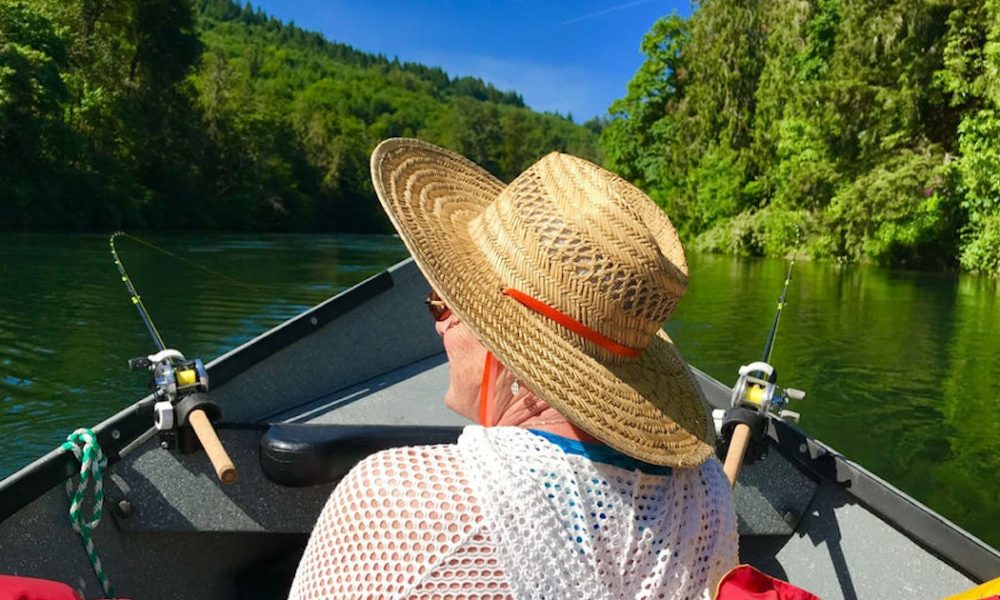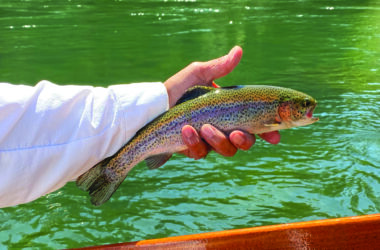 Limits of trout on the McKenzie River are pretty common in July. Here, a morning layer of clouds that turned to full sun about noon had the trout aggressively surface feeding all morning. Frank Armendariz/Outdoors reporter
Limits of trout on the McKenzie River are pretty common in July. Here, a morning layer of clouds that turned to full sun about noon had the trout aggressively surface feeding all morning. Frank Armendariz/Outdoors reporter
The dog days of summer are looming, water in small ponds and shallow lakes is warming and the annual progression of summer is starting to affect the angling conditions across Lane County, which generally slow in the valley with the hot temperatures.
Trout planting is also pretty much over for the season, but there are exceptions. Alton Baker canal, Fall Creek, Leaburg Lake and Clear Lake will get a shot of fresh hatchery trout this week, as will the McKenzie River, which is scheduled to get several thousand hatchery trout this week and several more thousand all the way up to Labor Day.
The spring chinook run into the valley is pretty much over for the year although a few salmon are still being caught on both the Middle Fork of the Willamette and McKenzie rivers. The run size this year of 18,000 salmon was only about half of the 10-year average. But luckily, spring river conditions made for a better-than-average bit – much better than the run size would have dictated.
There’s good news for steelhead fishermen in Lane County, after dwindling down to about a dozen fish per day: A fresh surge of summer steelhead began to pass over the Willamette Falls during the last week of June and that surge has continued now into mid-July. The summer steelhead run actually doubled in just a couple of weeks and is now close to 5,000 fish. Although still only about a third of the annual run size, it’s still good news and hopefully the trend will continue into late summer.
The McKenzie and Middle Fork Willamette rivers here in Lane County should about now be seeing the benefits of that surge. It generally takes steelhead about 14 days, once counted at the Willamette Falls ladder, to reach the upper tributaries.
Out on the coast, the Oregon Department of Fish and Wildlife has lifted all the restrictions and warnings on shellfish collection, so you are good to go. Crabbing in the Siuslaw Bay hasn’t improved much over the last couple of weeks. Speculation is that the super low minus tides we have been experiencing the last few weeks may be to blame. A more characteristic tidal exchange has begun here in mid-July and hopefully we will see an uptick in the success.
Finally, let me finish where I began the last report, out on the Central Oregon Coast. The number of limits of salmon coming into the Port of Siuslaw has been pretty ”lights out,” folks. Chinook are also beginning to represent nearly half of every limit. I spoke to one captain who had limited his four passengers with six chinook averaging about 12 pounds each and two hatchery coho at about eight pounds each. They also released about a dozen wild coho.
To be retained, coho must be hatchery-produced and have a healed-over, clipped adipose fin. Wild and fin-clipped chinook are available for retention in all non-selective zones. For a more detailed description of the salmon fishing regulations along the length of the Oregon Coast, visit dfw.state.or.us/MRP/salmon/Regulations/docs/2019_Rec_Ocean_Salmon_Season_Map.pdf.
Now go fishing! Take your kids or a friend; those will be some of the best memories….








